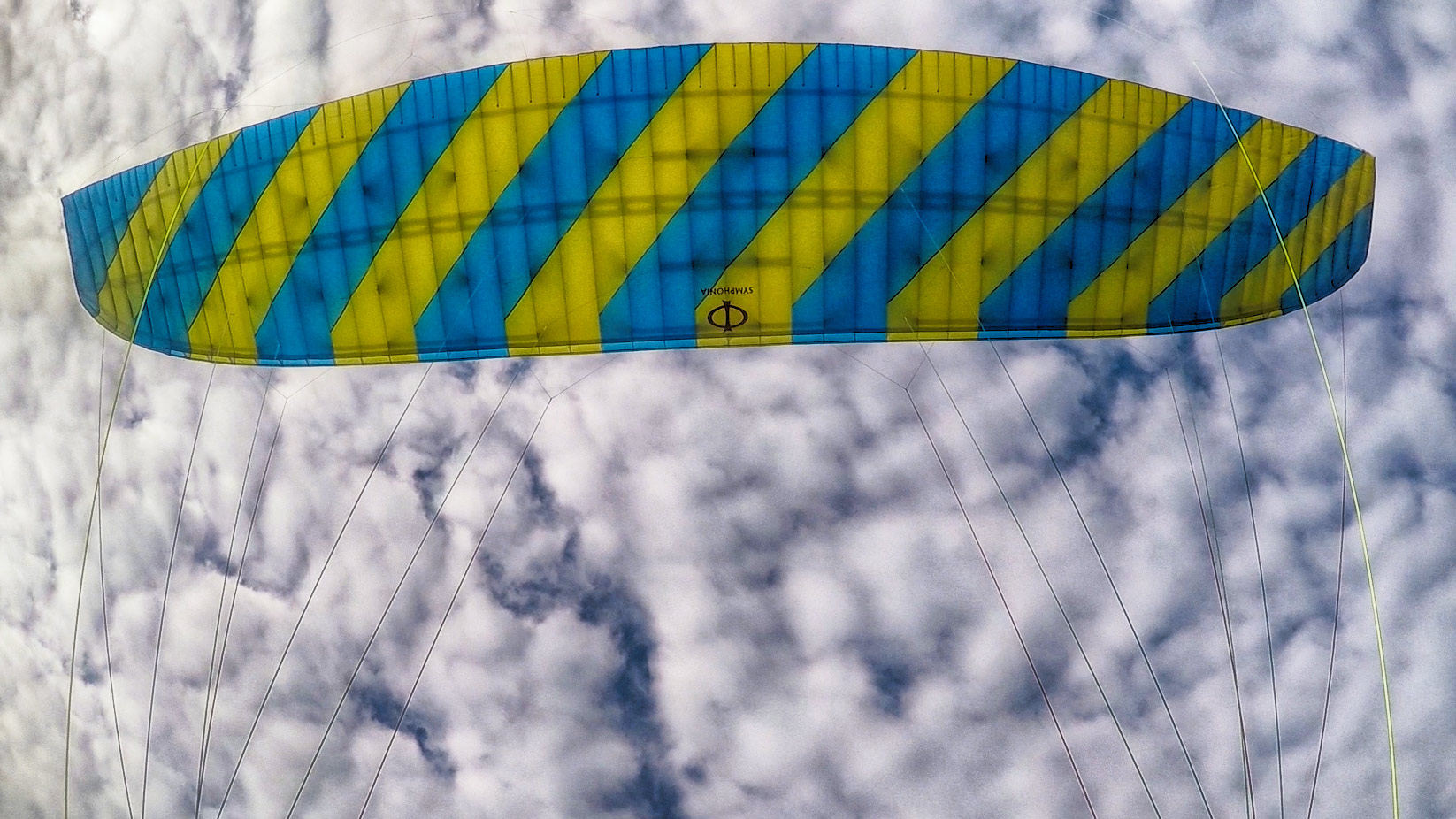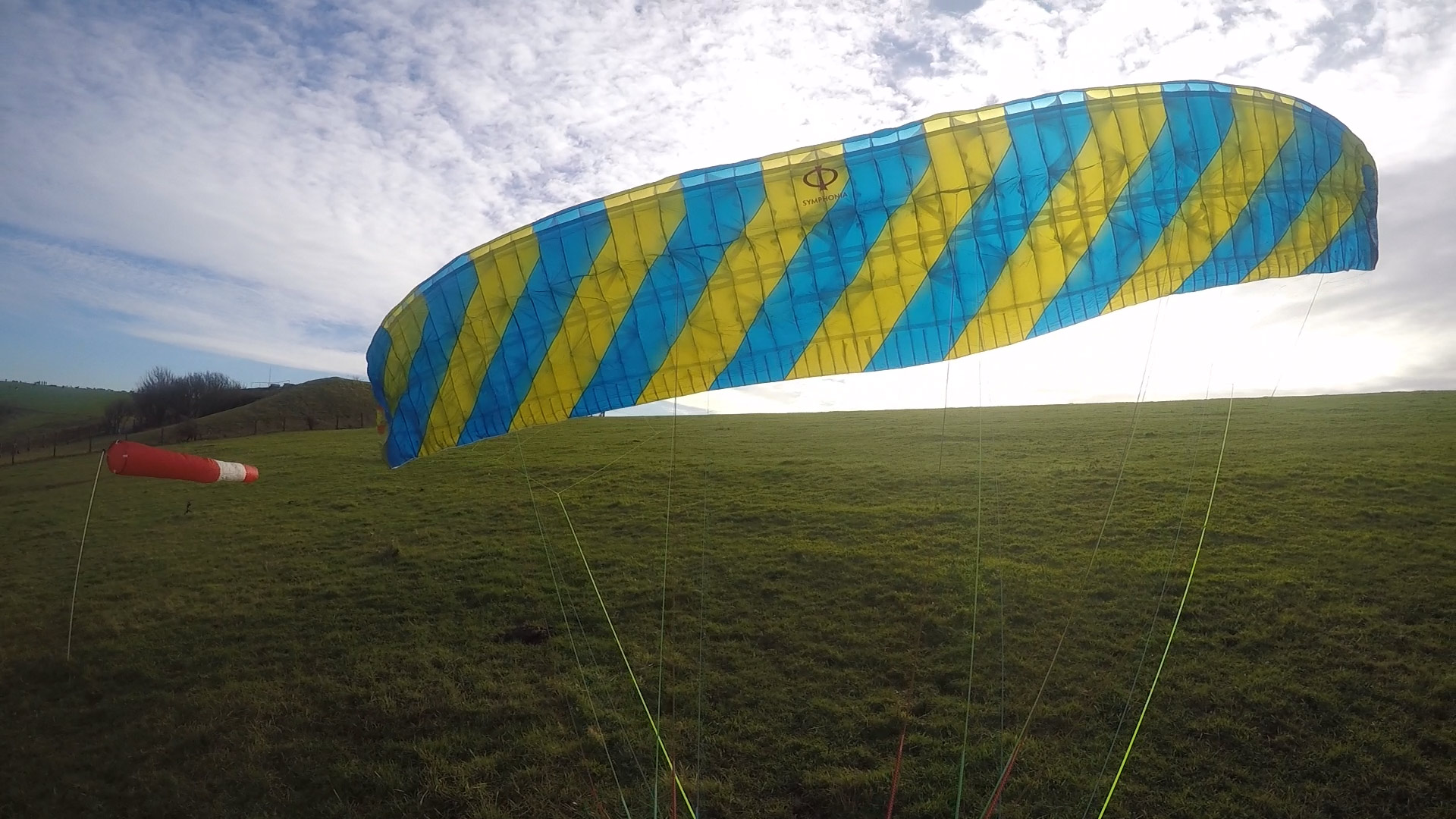
You’d expect a designer with such a long tradition of excellence in paragliding to have something special up his sleeve when he starts his own brand. Something that not only displays his mastery of design but creates a space within a crowded marketplace. A disruptor. There’s no question that the Symphonia will be a defining wing for PHI.
The new PHI range begins with a school wing, an intermediate wing and a high performance wing, but unlike most brands that make these EN A-B-C, PHI’s three wings are all certified EN A. This might lead to some confusion amongst pilots who expect an A to be a beginner wing. It’s not intended to be, but that doesn’t mean it isn’t suitable for a talented graduate from a good school. In fact I’d say this wing has the widest potential market of any paraglider I’ve flown. Unlike many wings in the Progression class or even XC class, the SYMPHONIA is enjoyable for an experienced pilot to fly, it doesn’t feel limited in any way, it’s just ridiculously simple to fly.
The only aspect which might turn some pilots away is the colour scheme, but it’s hard to find something new to do with stripes of fabric on an elliptical wing.

Construction is modern and finished to a high standard. Although advertised as having unsheathed lines, I was glad to see that only applies to the upper galleries. The long lower lines are all sheathed, which increases the longevity. The wing is light, and has a low packing volume, great for hike-and-fly enthusiasts and global travellers. The brakes have magnetic poppers. The brake loops are soft and adequate, but I would have preferred an adjustment to enlarge the loops.
The leading edge has a single curved strip of flexible wire that reinforces the profile. When I stated that it has no further reinforcing in the wing (in the video) I was referring to the flexible plastic wires in the nose area. Internally there is fabric bracing that distributes the loading.

On the ground the SYMPHONIA comes to life in the lightest breeze, wanting to rise up if you lean back, without needing the A risers. This creates a delightful wing to kite and play around with, but in strong winds your rear-risers control needs to be engaged to keep it pinned down.
The wing searches slightly ahead of the pilot on the launch, requiring some brake to hold it back. This is perfect for making a clean launch in light conditions, and for timing your launch in thermic conditions. It also bodes well for its behaviour when entering thermals.
The feeling in the air is good. It has some smoothness and filtering of turbulence, but it gave me a good feel of what was coming up ahead. When it moved it did so in a cohesive unit, with a very small amount of pitch that could be controlled if you wanted to.

Turns are achieved fast, with light pressure, it’s an agile wing with an efficient flat turn that doesn’t require weight shift to be effective. Adding weight shift increased the roll slightly.
Brake contact, feel, position and pressure was optimal. It gives the pilot the feeling of a refined wing.
If you turn tight and enter a spiral, the energy buildup is progressive and easily controlled. The exit is smooth with little pitch back and therefore little pitch forward – it seems to convert the energy all by itself.
It has a short brake travel to stall point for an EN A, I expect that is on the limit for the class, so it suits pilots that are not going to hang on the brakes like an ape. In its favour is the spin point behaviour – I found it preferring to enter a steep turn rather than spin, which is reassuring.

Big ears were large, easy to induce, stable with or without speedbar, produced a high descent rate and gave me a feeling of confidence to use them even close to the slope. The tips required a single pump on the brakes to clear.
I messed around with a few asymmetric collapses, which produced a reassuring fast reinflation with little turn. There’s a large amount of resistance to collapsing the wing.
At full speed bar, the wing was well over 10km/h faster than trim speed (at 200m, 12degC) so it’s the fastest EN A I’ve flown and faster than many EN Bs (possibly even some high end XC class wings. Time will tell). It was solid enough at full bar, but not rock solid – I think you’d be required to actively work the speedbar in rough air to optimise the stability. Or you could back off the bar slightly, so your friends can keep up!
[edit 20/01/2018: I was supplied with a Symphonia 22 with incorrect risers having 17cm travel instead of 15cm. I'd estimate that the full speed will be reduced to around 10km/h over trim, and it will feel more comfortable at the limit]

The Phi SYMPHONIA in a nutshell
The SYMPHONIA is designed as a ‘high-performance wing in the A class’ which makes it a bit of a genre-buster. It’s not a school training wing (although I’d be happy to let a friend play on a sand dune with it), it’s not necessarily a First wing either (although talented beginners in mild climates could handle it) where it is similar to the Advance Alpha 6 in its ability to provide both safe handling and excess performance. Such a wing would normally fit into our Progression Class (mid EN B) along with Nova Ions and Skywalk Tequilas. However, the speed, responsive handling and promised performance could make it achieve similarly to the XC class, which has many wings of a high EN B certification (by ‘high’ we mean ‘only just in the class’ – any hotter and they’d be EN C). The SYMPHONIA straddles all three groups while delivering EN A safety levels. As Hannes Papesh promises, “Expanding the horizons for safety-conscious pilots.”
Further testing required. Please send thermals.
Reviewed by Greg Hamerton on 13/11/2017
SYMPHONIA 22 (75-95kg) flown at 91kg.
Find out more about the Phi Symphonia
Want to see more?
There's no better way to support our efforts than buying kit from us. We'll ensure you get great service! Choose from our huge range AND enable us to produce more videos and articles to benefit the freeflight community.

